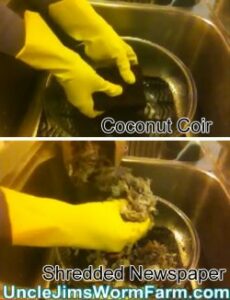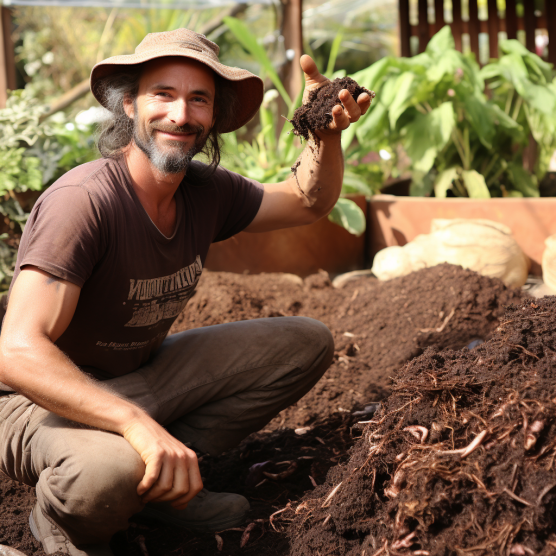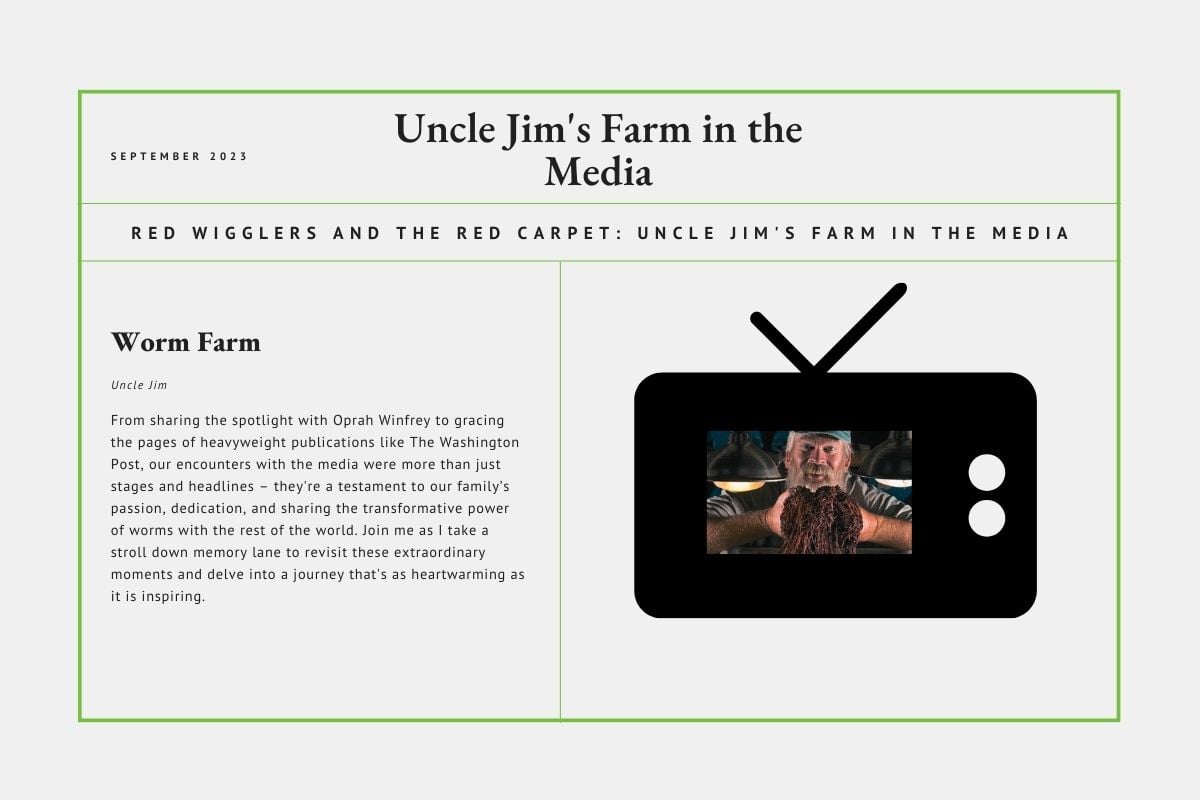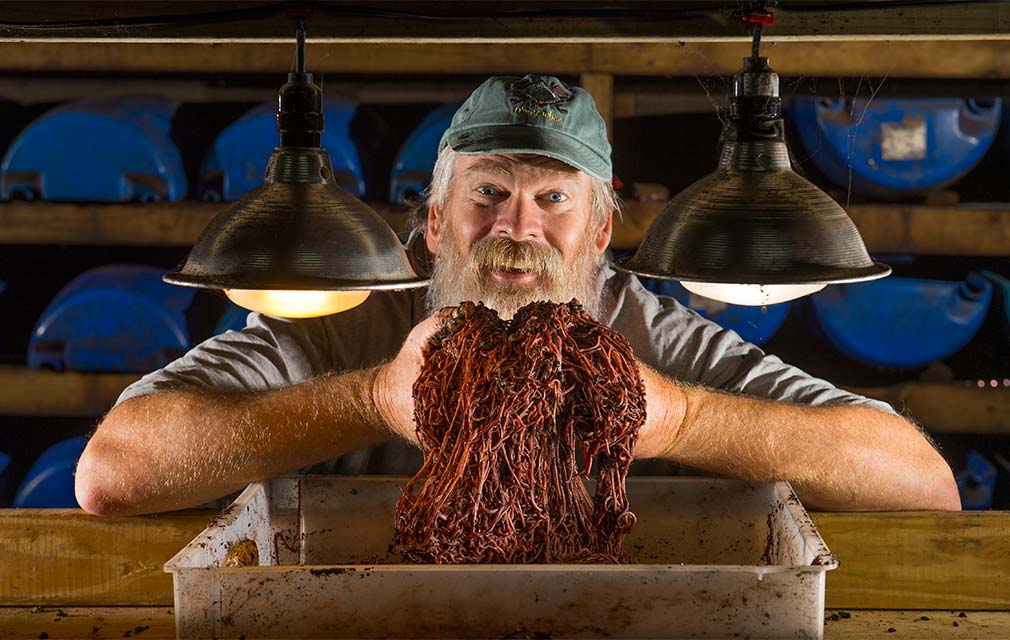Bedding is an essential part of your worm bin and often the key to your worms’ health and happiness. You will need to add bedding when you start a new vermicomposting bin, pile or trench. Fresh bedding can help if something has gone awry in your worm bin (see “Sick Worms”). If you need to harvest a lot of worm castings, you have the option of adding bedding to your worm bin. Bedding allows the worms a fresh environment, proper moisture, and room to breathe and move. Worms also eat bedding, so it has to be safe material. Here we’ll discuss some materials for worm bedding and how you should use them.
Bedding Basics
There are a few basic factors of bedding that you should have in mind when adding any type of bedding to your worm bin.
- Cellulose. Bedding is generally some form of cellulose, meaning it is a source of energy when broken down into carbon by worms.
- Neutral pH. Material should be neither too alkaline nor too acidic, but as close to 7 on the pH scale as possible.
- Light and fluffy. Bedding is crucial for the flow of oxygen and regular movement of the worms. Light, shredded materials allow for air exchange and reduction of odors.
- Moisture-retaining. Though material should be light, it’s also essential that it be able to hold water. Any bedding put into the bin should be lightly dampened (but not soaking and heavy) first.
- Non-abrasive. Worms have thin, sensitive skin that can be easily hurt by anything sharp or rough, so avoid abrasive material.
Types of Bedding
There is no one best type of bedding to use in your worm bin; all have their advantages and disadvantages, and some are more readily available than others. It is best to use a combination of several materials in the bin at any given time and to be aware of each one’s effect on your worms’ environment.
1. Leaves & woodchips
Decaying leaves are a simple type of bedding that you may have on hand right in your yard. Ideally use leaves already decomposing at the bottom of a leaf pile. If you can, choose maple instead of oak leaves for a faster decomposition time. Also be aware that leaves can mat together when wet, and that you may be bringing other critters or organisms in with the leaves. Adding a small amount of untreated wood chips can help create space and airflow, ideal for use with other beddings.
2. Newspaper & cardboard
A common and readily available material for bedding is newspaper. When shredded, it is easy to get a large quantity of light and fluffy bedding for the worms. Use only newsprint with black ink, no colors. Black ink is harmless to worms, but colored inks might not be. Make sure that larger strips don’t dry out and wet strips don’t clump together too much. Brown cardboard is also great for worms. Other types of paper, perhaps shredded from a paper shredder, work fine too, but bleached white office paper is not as good for your worms and also is less absorptive.
3. Coconut fiber & peat moss
Coconut fiber, or coir, and peat moss are two types of less readily available bedding. They retain moisture very well and worms love them. Coir is a more friendly substitute for peat moss. If you get peat moss, read the package to make sure it has no chemicals added. If you happen to get your hands on these materials, use small amounts with other bedding, but don’t rely on these alone. At Uncle Jim’s Worm Farm, some of our compost bins are shipped with coconut coir, and you can use it according to package directions.
Manure from horses, cows, and rabbits provides great nutrients to worms. If you can obtain it easily, make sure the animals weren’t recently treated with drugs for parasitic worms in case it kills red worms also. Be aware that other critters like mites, grubs, and centipedes are likely to be in the manure too. Also be conscious of the fact that manure heats up quickly and should be added in small quantities or given time to cool first.
Bedding is essential for starting out your worm bin or correcting problems. Your worms will soon eat the original bedding and produce plenty of worm castings to live in. Keep adding kitchen scraps and other worm food, and your population of worms will live indefinitely. Once in a while, you will want to harvest some of your worm castings to fertilize your garden. You should be able to leave enough bedding/worm castings behind to house your worms. If they need more living space, you can add bedding.
If you need more composting worms, order some red wigglers from Uncle Jim’s Worm Farm.










18 thoughts on “Worm Bin Bedding”
I want to raise fishing worms, red and euro nightclawers, using totes I have that are about 24″ 14″,
Can I mix red and euro’s or should each have its on container.
How deep should the bed be, and how many worms per bed.
Do both use kitchen items.
I plan on keeping them in my garage.
thank you
I will order soon as I get bedding ready to go.
Hi James,
Yes, you can certainly mix both types of worms together with out any issues at all. Because the European Night Crawlers require a deeper environment, you will want the bin that you are adding them to to be at least 12 inches in depth of soil. You can feed them worms kitchen scraps (fruit peels, veggie peals, coffee grounds, paper towels/plates/napkins). The bin should be maintained between 40 and 80 degrees F, kept as moist as a wrung out sponge, and maintained at a pH of 7. Have a great day!
Do you guys ship worms with some of there existing bedding?
Mine were shipped in peat moss.
Can I mix coconut coir with aged horse manure?
Which brand of coco coir should I buy? I hear some are better for worms?
;Good morning, we have a Hungry Bin worm farm, each morning a lot of worms are either up on the side walls or on the lid, what does this mean?
I have peat moss all over my yard. How do I prepare it 4 the bin?
Means your bedding may be too acidic , add some lime dust, if you are using peat moss, let it set in a bucket of water a few days to neutralize the Ph.
Can I use coco husks for use as partial bedding material when mixed with brown craft paper for my red wigglers. All the newspaper I have has colored print on it. Should I use it? Do I need air holes on the bottom sides of my bin or are air holes in lid and sides at the top enough? Thank you.
New worm enthusiast here, Can the coconut fiber bedding from the local pet stores (PetCo, PetSmart) that’s normally meant to house reptiles and amphibians be used in my worm bin if I’m in a pinch and don’t have time to order any from y’all this time? Any feed back greatly appreciated
I recently bought a worm bedding that looks like dryer lint, can I use dryer lint to refresh the bedding?
How do I see the answers to all the questions you have received? Seeing them will help me with the red mites I have just found.
Thanks, Lisa
Coco fibre intended for pets will be ok because it will contain no chemicals.
Whereas horticultural coir often contains fertilisers which may harm the worms.
Enjoy!
Website says to read comments in post questions and answers for lots of information, but there is only one question with an answer here, and no longterm questions and answers to access. Why is that?
Hello Connie;
It seems that the comments under this item are all very old. I will have to see why this is not updating. We do answer the questions as best as we can. I am in here answering them now. So sorry for the confusion, we will look into this and have it fixed as soon as possible.
Uncle Jim’s Worm Farm
I can’t help but feel that, since the comments are attached to blogposts, there are a lot of different threads and many of the subjects cross. A question may have been answered elsewhere. To answer them all would require a good alert system that makes sure that any unanswered questions/comments are regularly brought to the attention of the likely nonexistent person that has an unbelievable amount of time to answer the questions.
In numerous forums, I find what I really want to know is not really made clear to the respondent, and I am directed to an answer that doesn’t meet my needs. This also tends to make someone with limited time think a question they see has already been answered.
A good selection of hashtags applied to both questions and responses, made searchable, helps a person find answers that have already been posted, saving time for all. Especially if the questioner returns to their question and comments that the question has been answered already elsewhere, and provides the link. Makes the process more efficient and reduces the workload on Uncle Jim and folk.
If you find little red mites where there’s a population explosion then it means you have an imbalance of some sort in the worm bin.
Benefits just a normal amount of the mites then that’s okay. That’s normal. They’re meant to be there. They’re part of the ecosystem.